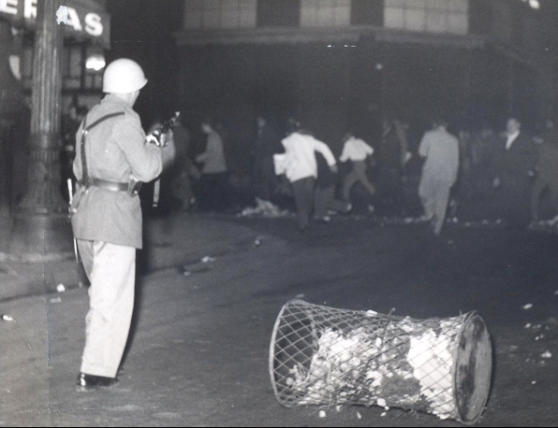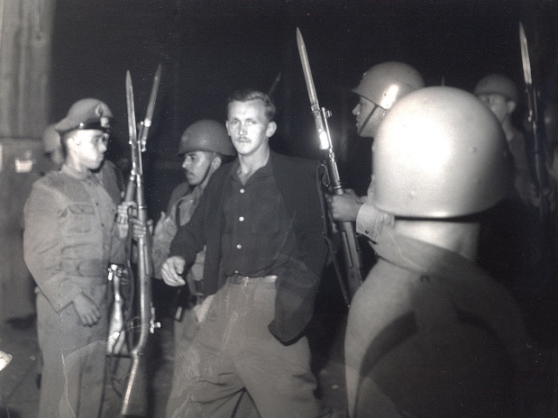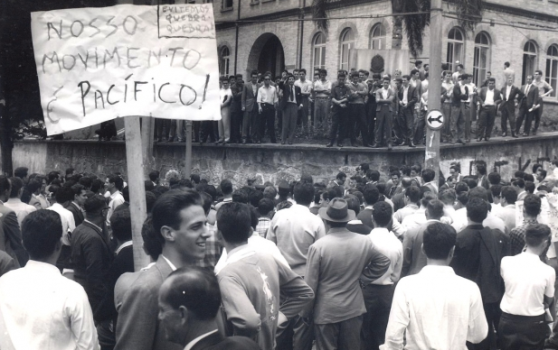In addition to my São Paulo protests post, I translated this article from Estadão’s archives.
“At the end of November 1958, residents of São Paulo went to sleep with one bus fare and woke up with another. At the end of that day the city went to sleep with four protesters dead, dozens wounded and 150 vehicles destroyed. The bus riders only found out about the readjustment when they found, on the morning of the 30th, announcements on the windshields of the buses and trolleys with the new fare on it. With the increase in the still of the night, the bus fares went from Cr$ 3.50 to Cr$ 5.00, and the trolleys went from Cr$ 2.50 to Cr$ 3.00 (the monetary note of the time was the cruzeiro, with the symbol Cr$). Aware of the possible reactions, the mayor Adhemar de Barros sent armed police to many of the city’s bus stops. On the days of the protests, Barros was in Rio de Janeiro.
The first reaction by the population was to complain. But at 10:30am news started to arrive about the first bus and trolley paralyzations by students which went throughout the day. The students of the Liceu Pasteur school stopped a trolley on its last stop in Vila and the other was stopped by students of Mackenzie University on Rua Maria Antonia. During the whole of the morning and afternoon the protests were peaceful. To prove it, Mackenzie students set up a chess table in front of a stopped trolley car.
But the paralyzations took a turn during the evening, when there was more need of public transport. The students had already blocked the buses from making their rounds on Avenida São João. At the same time the shop owners were closing their doors, someone shattered the windows of the Olido movie theater. In several parts of the city the protesters emptied the buses, in others, like at the 14 Bis plaza, the fare inspectors of the now-extinct Metropolitana de Transportes Coletivos Company (CMTC) instructed the bus drivers to go back to their garages.
With the bus stops more and more overcrowded with people, the Civil Guards were sent to disperse the protesters and to free up the circulation of the vehicles at the Praça da Sé and the Praça Clóvis, the two busiest terminals at the time. The soldiers carried with them, aside from real ammunition, blanks and smoke bombs. When the troops from the Guard Battalion and the Cavalry arrived, around 6pm, they were greeted with sticks and stones by the protesters and they couldn’t stop the buses from being destroyed and put on fire. At 9pm, without being able to disperse the crowd, the troops received orders to shoot rounds into the air. The result was 4 dead, three by bullets, and dozens wounded and arrested.
To clear out downtown, the Mayor’s Office had trucks from the Mogiana Company, from the Department of Water and Sewage and the Department of Highways, to transport people free of cost.
Authorities. Only at 9pm, when the movement had dominated the city, did the authorities meet at the Campos Elísios Palace. At the meeting was the governor Carvalho Pinto, chief of staff Quintanilha Ribeiro, and the Secretary of Justice, Pedroso Horta. On the way out of the meeting, on a televised interview, Horta justified the increase with a reminder that one of Adhemar de Barros’ campaign promises was to get the CMTC finances back on track. And one of these measures would be by increasing the bus fares.
On the following day, the paralyzations and the police repression continued. This time it was in front of the Prates Palace, the then-seat of the House of Representatives in the D. Pedro II Park. The protesters went there to demand the lowering of the fares. The councilman Monteiro de Carvalho got up on the hood of a car and explained that the issue of fares was the City Hall’s responsibility. The crowd was dispersed around 7pm with the “blows of police batons on their heads”, according to what the Estado newspaper.
Scrapped. The CMTC with 12,000 employees in financial crisis was scrapped, the fleet wasn’t renewed and they weren’t even able to import parts and accessories for the broken buses. In 1957, with a fleet of 1,333 diesel buses, only 821 actually worked. The company also had 110 electric buses and 210 trolleys that hadn’t been taken off their routes due to the incapability to substitute the fleet.” – Source (PT)
For more on the protests in English, go here.




